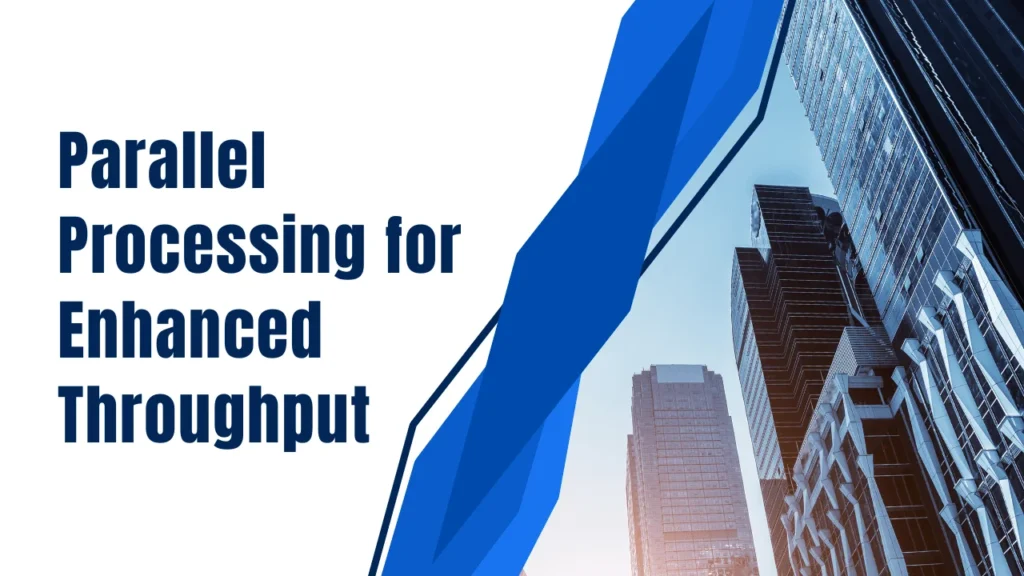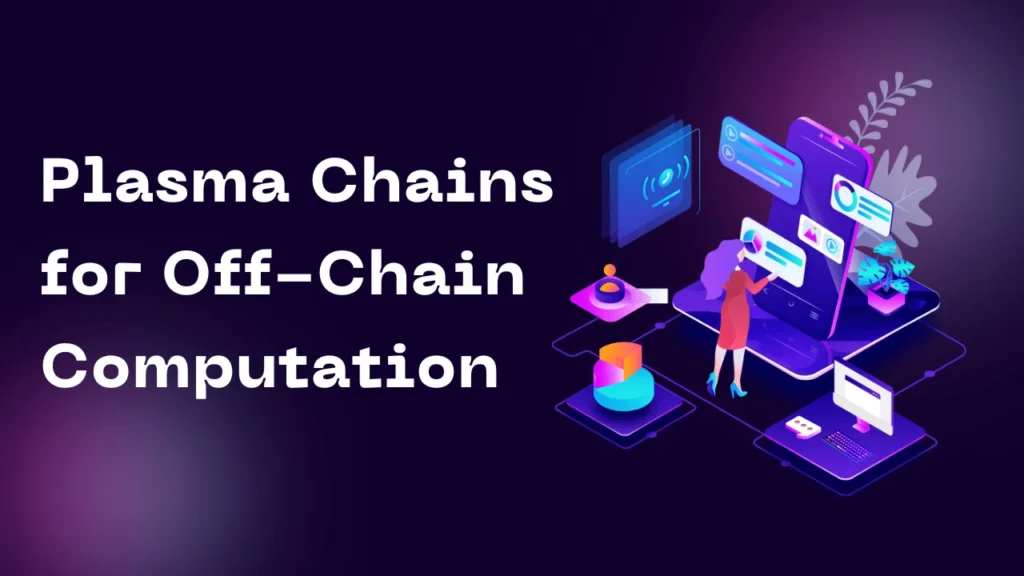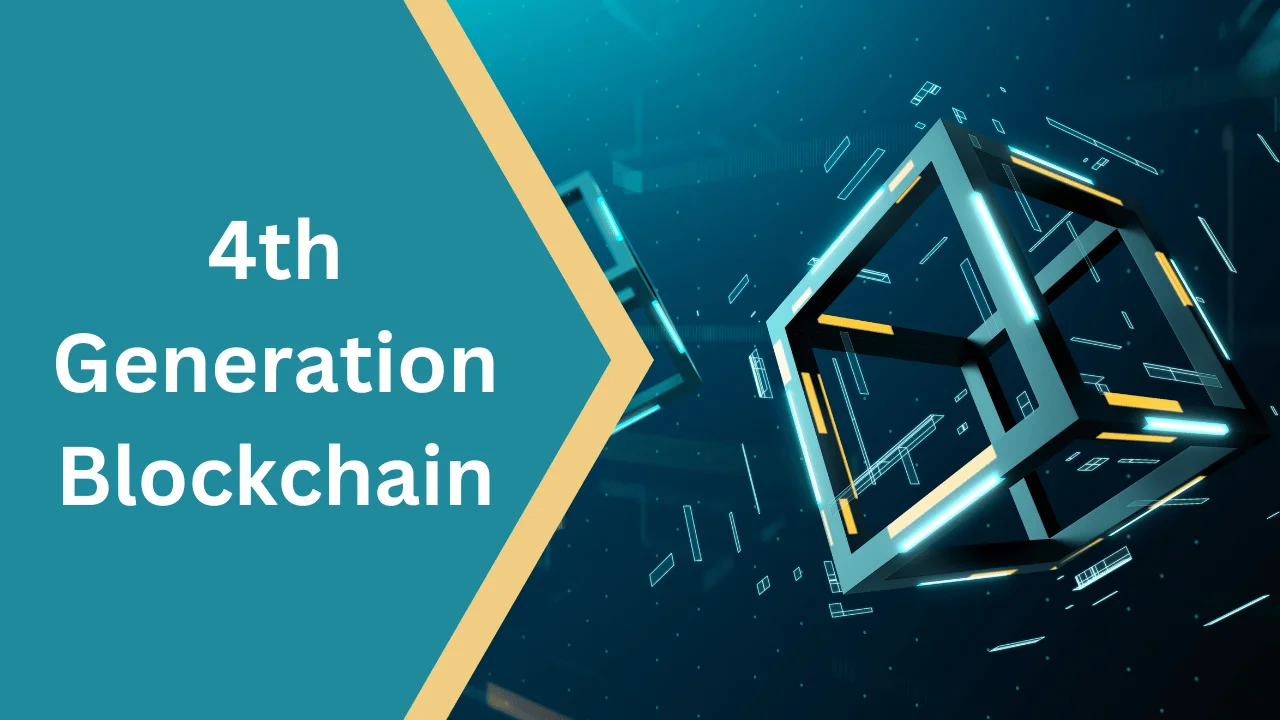An essential part of making 4th Generation Blockchain more scalable is the innovative concept of sharding. Splitting the network into smaller, more manageable pieces, or “shards,” allows these blockchains to process smart contracts and transactions simultaneously, greatly enhancing the network’s capacity and efficiency.
Parallel Processing for Enhanced Throughput

Blockchain networks are able to process multiple transactions across multiple shards at once thanks to sharding. Blockchain technology is becoming more attractive to industries that demand fast transaction speeds due to its parallel processing capability, which greatly enhances transaction throughput.
Security Measures in Sharding
The advantages of sharding aren’t without the new security risks it poses. By implementing strong security protocols both within and across the network, fourth-generation blockchains protect against fragmentations and guarantee the integrity of transactions.
Role of Cross-Shard Communication
In order to keep the network together, it is essential that the shards communicate well with one another. Complex protocols guarantee that all nodes in the blockchain can talk to each other and that all transactions are processed uniformly and securely.
Layer-2 Scaling Solutions
Improving blockchain networks’ performance without changing their fundamental design relies heavily on layer-2 scaling solutions. These solutions offer enhanced scalability and faster transaction speeds by operating on top of the blockchain.
State Channels for Instant Transactions
With state channels, users can send and receive funds independently of the main blockchain, which greatly reduces network load and enables instantaneous transactions. Applications that demand real-time transactions will greatly benefit from this.
Rollups for Transaction Throughput Enhancement
The blockchain processes a rollup, which is an aggregate of several transactions. With this method, the network load is significantly reduced without sacrificing security or decentralization of the system.
Plasma Chains for Off-Chain Computation

By spawning new blockchains that are linked to the parent blockchain, plasma chains improve the network’s efficiency and scalability by allowing off-chain computation.
Cross-Chain Transactions Technology
A crucial characteristic of fourth-generation blockchains is the capability to conduct transactions across various blockchain networks. Blockchain technology’s reach and utility are both increased by its interoperability, which in turn encourages a more linked digital ecosystem.
Facilitating Inter-Blockchain Liquidity
By facilitating the instantaneous movement of assets across various blockchains, cross-chain technology increases liquidity and lets users take advantage of the best features offered by different networks.
Smart Contracts for Cross-Chain Interactions
Complex operations and automations can now transcend the limitations of a single network, all thanks to advanced smart contracts that can function across numerous blockchains.
Decentralized Cross-Chain Bridges
Secure and trustless cross-chain transactions are made possible through decentralized bridges, which connect different blockchains. In order to construct a multi-blockchain ecosystem that is both functional and completely interoperable, these bridges are essential.
Privacy-Focused Blockchain Systems
The significance of safeguarding user data and privacy has risen to the surface as blockchain technology develops. Users are able to engage in safe and private interactions with dApps and one another thanks to the advanced privacy features integrated into fourth-generation blockchains.
Zero-Knowledge Proofs for Enhanced Privacy
A groundbreaking privacy mechanism, zero-knowledge proofs enable one party to demonstrate to another the veracity of a statement while concealing all information pertaining to the statement’s validity. Thanks to this innovation, everyone’s privacy remains intact throughout blockchain-based transactions and interactions.
Private Transactions for User Confidentiality
With the capacity to conceal transaction details from the public ledger, fourth-generation blockchains enable private transactions. Users will have more faith in the blockchain ecosystem because of this measure, which protects their private financial and personal data.
Selective Transparency for Controlled Information Sharing
With the help of these blockchains, users can control which users can see which data by implementing mechanisms for selective transparency. Anyone looking to reap the benefits of blockchain technology while simultaneously protecting proprietary information or staying in compliance with regulations will find this feature invaluable.
Enterprise-Grade Blockchain Reliability
Blockchain technology needs to be more stable and dependable in addition to more scalable and interoperable for businesses to use it. To meet these demands, fourth-generation blockchains have emerged, offering the stable foundation for enterprise-level apps.
High Availability and Fault Tolerance
Despite hardware failures or network disruptions, enterprise applications can continue to function with the help of fourth-generation blockchains, which incorporate distributed ledger technologies that provide fault tolerance and high availability.
Scalable and Flexible Infrastructure
Companies must have the capability to increase or decrease infrastructure capacity according to demand. The scalability and adaptability of fourth-generation blockchains allow them to meet the evolving demands of companies without sacrificing safety or performance.
Regulatory Compliance and Data Governance
Newer blockchains prioritize compliance and data governance in response to regulatory agencies’ heightened interest in blockchain technology. With their help, companies can take advantage of blockchain technology’s innovations while still meeting regulatory requirements.
Future of Decentralized Applications (dApps)
The advancements in fourth-generation blockchain technology are setting the stage for a new era of decentralized applications (dApps). Thanks to these blockchains’ improved scalability, interoperability, privacy, and dependability, developers can build dApps that are both more advanced and easier to use, increasing the likelihood that they will be adopted by the masses.
Seamless User Experience
With fourth-generation blockchains providing easier-to-navigate interfaces, quicker transaction speeds, and reduced fees, the emphasis is squarely on the user experience. To promote broad use of decentralized applications (dApps) across different industries, these enhancements are essential.
Innovative Use Cases Beyond Finance
The first wave of blockchain applications were primarily in the financial sector, but newer, more advanced blockchains open up a much wider variety of uses, including decentralized social networks, content platforms, supply chain management, and identity verification.
Integration with Traditional Systems
The capacity of decentralized applications to merge with conventional systems, connecting the two worlds of decentralization and centralization, is crucial to their future success. dApps are becoming more commonplace thanks to fourth-generation blockchains, which are making this integration possible.
FAQs
What is fourth-generation blockchain?
Fourth-generation blockchain refers to the latest evolution in blockchain technology, focusing on addressing scalability, interoperability, and sustainability challenges.
How does sharding improve blockchain scalability?
Sharding divides the blockchain into smaller segments, allowing multiple transactions and operations to be processed in parallel, significantly enhancing the network’s throughput.
What are layer-2 scaling solutions?
Layer-2 solutions are technologies built on top of the main blockchain to increase its transaction processing capacity without compromising the network’s security or decentralization.
Why is cross-chain interoperability important?
Cross-chain interoperability allows for seamless transactions and interactions between different blockchain networks, expanding the use cases and efficiency of blockchain technology.
What makes fourth-generation blockchains more sustainable?
Fourth-generation blockchains use energy-efficient consensus mechanisms and are designed with sustainability in mind, aiming to reduce the environmental impact of blockchain operations.
Also Read: How Can Blockchain be Used to Support Sustainable Business Practices?
Conclusion
The advent of 4th Generation Blockchain marked a watershed moment in the development of the technology. In order to ensure that blockchain and decentralized applications are an essential part of our digital lives in the future, these platforms are tackling important issues like scalability, interoperability, sustainability, privacy, and enterprise-grade reliability. Improvements in fourth-generation blockchain technology are signs of the ecosystem’s maturation and readiness to accommodate users’ and businesses’ varied demands, in addition to being technical accomplishments in and of themselves. The most revolutionary uses and effects of blockchain technology are still to come, as we are only scratching the surface of what these groundbreaking platforms are capable of.

Timothy Jensen is an expert writer who specializes in the world of cryptocurrencies, including blockchain technology and Bitcoin. He has a passion for explaining complex topics in an easy-to-understand way. Timothy’s work aims to demystify the digital currency landscape for his readers.

